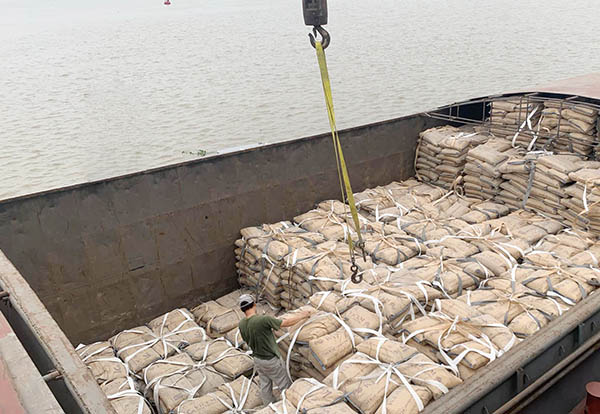Cement Industry under great pressure from policies and market instability

The economy is grappling with the consequences of prolonged unsynchronized development and numerous concerns in policy mechanisms. Vietnam's cement industry is facing a double challenge, under significant pressure from inadequate regulations, short-term monetary and credit policies, and instability in both domestic and international markets.
Despite the construction industry's growth rate of 4.7% in the first two quarters of 2023, the production value of key construction materials still declined compared to the same period last year. Notably, cement production reached 46 million tons, down 5%, and consumption reached 45 million tons, down 7%.
Consumption dropped sharply in both domestic and export markets, while rising input costs have put cement businesses in their most challenging position in years.
Mr. Luong Duc Long, Vice Chairman and General Secretary of the Vietnam Cement Association, stated that since the beginning of the year, cement production and consumption have shown little improvement. The industry is facing difficulties such as rising fuel costs (coal, electricity, etc.) and transportation costs, while market demand has significantly declined. Output bottlenecks have led to capital and product inventory buildup, exacerbating challenges for businesses.
Coal costs account for 45–55% of the production cost of one ton of clinker (equivalent to coal prices of 3.3–5 million VND/ton), while electricity costs account for 17–20% of the production cost of one ton of cement. Meanwhile, rising energy prices have also driven up transportation costs.
In a context of declining market demand, the export tax on clinker increased from 5% to 10% starting January 1, 2023. Additionally, procedures for activities such as securing raw material mines, using waste and refuse as alternative raw materials or fuels, and generating electricity from kiln waste heat remain complex and challenging.

Given sluggish domestic consumption, many cement companies have turned to exports as a temporary solution to address excess cement supply. However, in the first six months of 2023, Vietnam's cement export market was also unfavorable. According to the Ministry of Construction, exports of cement and clinker products reached 14 million tons, down 15% compared to the same period in 2022, with an estimated export value of USD 700 million.
Mr. Pham Van Bac, Head of the Materials Department (Ministry of Construction), shared that the economic recession has led to a sharp decline in the consumption of many construction materials. Over the past 20 years, the production of construction materials has grown significantly, with output exceeding domestic demand by 10–30%. In the context of export difficulties, businesses need to adjust production levels to match demand and reduce inventory.
From the perspective of the association, Mr. Luong Duc Long proposed promoting public investment and unlocking capital for real estate. specifically, addressing output bottlenecks in the construction materials market requires increased investment in housing (especially social housing), urban areas, and transportation infrastructure, particularly in southern provinces, to both create demand for products and improve infrastructure.
Additionally, Mr. Long suggested supporting exports to regulate supply and demand during surpluses through measures such as reducing or temporarily suspending the clinker export tax increase (reverting to 5%), facilitating the use of alternative raw materials and fuels, and utilizing kiln waste heat for electricity generation. These measures would achieve dual goals: mitigating high energy costs and addressing waste and refuse issues.
Experts also recommend that cement companies optimize production by improving technology to increase productivity and reduce costs, thereby enhancing competitiveness and profitability. Key areas include utilizing waste heat for power generation and using waste incineration as a partial fuel substitute.
Furthermore, cement businesses should develop new products and improve existing ones to enhance market competitiveness, attract more customers, and boost sales. Diversified products will also allow cement companies to tap into various market segments, maximizing the applications of cement products in society.
Source: Ximang.vn






